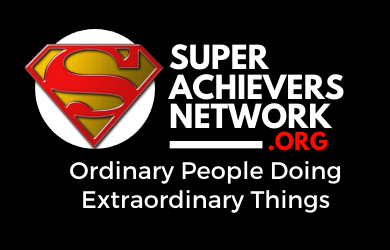Helpful hacks to keep your resolutions alive
The New Year is the end of one year, and the beginning of a completely new one. It only seems natural to reflect on the events of last year, what was good and what was bad. What things would you like to repeat, and what would you like to completely forget.
Either way, the new year seems the perfect time to refocus, and make new plans for a new year. We affirm to increase our successes and correct our mistakes. Thus, comes the New Year’s Resolution. This is the perfect time to set them. Further, it has become a long held tradition to set our New Year’s Resolution.
The New Year’s Resolution usually evolves from looking at the failures of last year, and vowing to do the opposite. If you got into debt last year, you resolve to got out of debt this year. If you’ve gained an extra 20 pounds, you declare this year you will take it off. In addition, you have to think of something to say when someone asks, “What’s your New Year’s Resolution?”
On the other hand, some people do make a concerted effort to think about making a strategic change in their lives. Changing their career path, learning a new skill, or developing a new habit, is something that will take some planning and thought.
Once you set your path for your new course of action, something happens. You start out doing great and before you know it, you are completely off your game. Maybe not doing anything at all.

What happened?
Why did my New Year’s Resolution fail?
You are not alone. It seems that everyone always starts out great, but by the time February rolls around, 90% of all resolutions are dead upon arrival. Half of us make New Year’s Resolutions, but less than 10% are actually keeping them.
Let’s take a look at this massive falloff, and see how we can stay on track.
Test No. 1 – The Honesty Indicator
The honesty indicator is a test that has two components. One is whether, or not, we honestly want to accomplish this resolution. Two is do we think we can honestly achieve it?
Did you choose this resolution because it sounds good to the ears of friends and family. Or is it something we honestly want to do. If we really want to do it, we have passed the first part of the honesty test.
Now, deep down in our hearts, can we say that our resolution is something that we think we can actually accomplish. Can we look at ourselves in the mirror, and say, with confidence that we can do this.
Consider ourselves a candidate if we can pass this test. Most people can’t.
Not being honest with ourselves is the first reason New Year’s resolutions fail.
Test No. 2 – Specificity Test
Most people who are familiar with goal setting know what setting SMART goals are. Smart goals are a time management principle used to make goals clear, reachable and attainable.
SMART stands for Specific (simple, sensible, significant). Measurable (meaningful, motivating). Achievable (agreed, attainable). Relevant (reasonable, realistic and resourced, results-based).
In our case, the S stands for specific. The second reason New Year’s resolutions fail is that they are not specific. It’s easy to say I want to lose weight. But that clearly is not specific enough to motivate us to persist toward our target. It is too vague. It has no specific destination.
To make our resolution specific, try quantifying it with a number and a time frame. We want to lose 30 pounds in the next 30 days. The resolution now becomes specific and measurable. A pound a day brings success your way.
Setting specific resolutions makes the accomplishment possible. Vivid images in our mind are more likely to give us the encouragement that we need to succeed. If we can clearly see it, we can surely do it.
Test No. 3 – The Time Test
New Year’s resolutions usually go something like this. The first week, excitement and enthusiasm allows us to abruptly adjust our schedule to squeeze in the new resolution. It’s hard to make the time, but we do it anyway.
Over the next few weeks, the resolution gets bumped by other more important emergencies. Next thing we know, our resolution has taken a back seat to other activities. We tell ourselves, it’s OK because we will get back on track later.
The trend continues until our resolution has been bumped off the schedule totally. It’s done. The time test? Failure.
Instead, let’s call on our good friend Habit to save the day. Habit is something that we deem important enough to do every day. It is non-negotiable. No matter how boring or exciting the task, we perform it. Bathing, brushing our teeth, getting that morning cup of coffee is an absolute must.
Treat resolutions the same way. In fact, try the tack-on method to incorporate your new resolution into the daily routine. The tack-on method is simply tacking on our new resolution to an already existing habit.
Tack on our new exercise routine before our daily shower. Make it non-negotiable. Soon, this will become another habit that we just do everyday; we exercise, then shower. Great way to incorporate exercise into our day. We will enjoy our new routine, and I’m sure our friends will too.
Test No. 4 – Realistic Resolutions
The next test is the Realistic Resolution Test. This test must be performed in conjunction with honesty, Test No. 1. Is our resolution a realistic one? Honestly. It may be realistic for someone else, but is it realistic for us?
Unrealistic resolution syndrome is one of the biggest reasons New Year’s resolutions fail.
Oftentimes people choose resolutions that are so big that most normal human beings could never achieve. For example, determining to become a millionaire when your current salary is $80,000.00 a year.
It is possible, but not very realistic.
Our wants may be so big that our resolutions follow that same trend.
Without really examining if it is possible for us, we just go ahead and make the resolution anyway.
It won’t take long, but we will soon run into the reality that want we are trying to do just isn’t possible for us.
Why go through that?
Just take a second, and examine our resolutions in the light of our own capabilities.
Can we see ourselves making that resolution a reality.
Do we have the resources, time, and skills to make it happen.
To vet our resolution, see if we can break it down into small steps that are easily achievable.
Then we can take it a step at a time.
Achieving one step at a time can create the momentum we need to stick with our resolution to the end.
We may even find it advantageous to focus on one aspect this year, and another aspect next year.
The thing that really matters is determining what we realistically can achieve.
Test No.5 – Risk and Reward Test
Risk and reward is something most people don’t think to consciously examine during the resolution setting process. Doing anything worthwhile certainly does have both risk and rewards. But how many people actually account for each?
Next December 31st, when it’s time to account for our actions throughout the year, the risk and rewards of achieving what we set out to do are obvious. The risks of not hitting our mark brings disappointment, continued hard times, and leaves us, oftentimes, worse than when we started. But the year is over. What can we do now?
The reward from achieving our goals on December 31st are obvious. We are delighted, self congratulatory, and ready to begin again. This joy is a lot like an adrenaline rush, it spikes through the roof, but quickly plummets. Seems hardly worth the sacrifices we’ve endured throughout the year to get there.
The Short Game
To get more satisfaction from this achievement process, let’s consider playing the short game. Instead of dealing with risk and reward at the end of the journey, why not deal with it on a day-to-day basis? We can examine the risk daily to see if there is a way to mitigate them ahead of time. If we are doing this on a daily basis, the risks are smaller and easily managed.
Like the saying goes, “An ounce of prevention is worth a pound of cure”, we can stay on track with some minor modification along the way.
And let’s treat rewards the same way. Let’s build in a small reward each day for the accomplishment of a task that puts us close to our final destination.
It’s surprising how many people are quick to encourage our friends and family for their small achievements, but somehow neglect to do the same for themselves. This year make it a point to build a reward system into our activities every day.
Get in the habit of treating yourself well, giving yourself some type of reward everyday. Pamper yourself with praise, kind words of encouragement, and even through physical gifts. This will keep us motivated to keep working throughout the year.
The Final Test
This year, our resolutions should be ones that we have honestly considered to be the ones that we really want, and feel we have what it takes to make them a reality. We increase our chances for joining the 10% of people who actually achieve their goals.
Next, really look at our resolution to make sure that the fine details of our vision are there. The more specific the better. And just to make sure we have a clear target to shoot for, quantify our resolution in concrete terms, so that it can be easily tracked. That way when we arrive at our goals, there’s no mistake that we are there.
We all have only 24 hours in a day. Make sure that we allocate a slot each day to accomplish a task that leaves us closer to the dream. This may sound easy, but it’s not. Unplanned emergencies are an everyday occurrence. So make sure to keep our slot open. Use the Tack-On method to make it a habit.
In conjunction with allocating the time, make sure what we’re after is realistic. Do we have all the resources, skills, and time to devote to our resolutions? Or are we biting off more than we can handle. Break our resolution down into smaller chunks, and take each one at a time. We may find that we can only achieve a piece this year, and save the other half for next year. Either way, just be realistic.
And lastly, don’t wait until the end of the year to deal with the risks and rewards. Play the Short Game, and manage both on a daily basis. Most importantly, please treat ourselves well, all year round. Treat ourselves with plenty of rewards, kind words, and even buy ourselves a gift for a job well done.
New beginnings are always filled with hope and possibilities for a better future. Let’s make ours one that we are sure to succeed.

